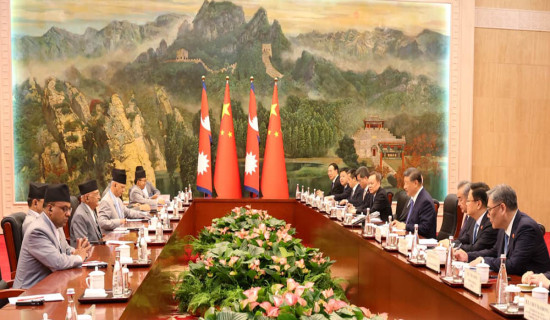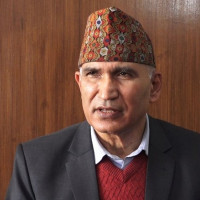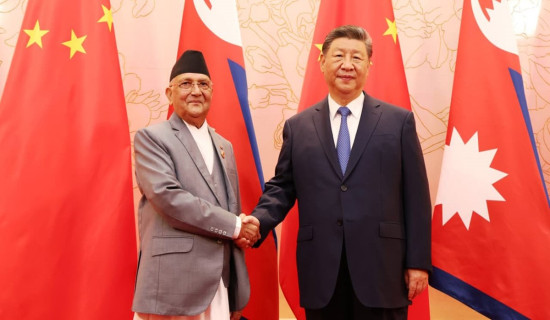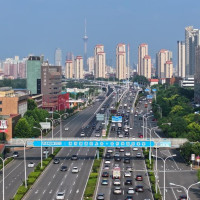- Sunday, 31 August 2025
Closing Disaster Gaps
The latest flash flood in the Bhotekoshi River at Rasuwagadhi area on the Nepal-China border has taken its toll on the lives of people, physical infrastructure and some power plants. With 9 confirmed deaths and 19 still missing, the disaster has damaged the friendship bridge connecting Nepal and China, disrupting the movement of people and goods. An estimated 24 containers, six big trucks and 34 electric vehicles (EVs) were swept away by the flood. The tragedy has once again highlighted the threat of cross-border natural disasters and urgently calls for real-time coordination between the two countries.
The disaster has also caused serious damage to the dry port in Rasuwagadhi, hampering bilateral trade. As per Nepal Electricity Authority (NEA), several hydropower projects, including Rasuwagadhi, Trishuli-3A, Devighat, and Upper Mailung Tadi power projects, were affected, disconnecting around 250 megawatt (MW) of electricity from the national grid. While the exact cause of the disaster remains unclear, preliminary reports suggest a Glacial Lake Outburst Flood (GLOF) in Tibet. Previous studies by the International Centre for Integrated Mountain Development (ICIMOD) had warned of the increasing size of glacial lakes in the Trishuli watershed. While authorities are trying to carry out a satellite-based investigation, the weather is said to be creating difficulties.
This unexpected event has further added to Nepal’s already serious plight caused by monsoon-induced flooding. The Tibet Autonomous Region of China is regarded as the ‘Water Tower of Asia’. So, any kind of disaster occurring in Tibet is bound to create negative ripple effects on downstream communities. Apparently, the authorities were not aware of the possibility of a devastating flood. This points to the weak real-time data sharing between the governments of the two countries.
Data-sharing gaps are not just unique to China. In the past, we had gone through similar challenges with India as well. Yet, to date, we do not have such mechanisms. Sharing data and information is critical for Nepal to come better prepared to tackle sudden floods and landslides. For this, Nepal must make use of its diplomatic channels to secure such cooperation.
This is very crucial given Nepal’s growing development ambitions and international commitments. The country’s transition towards hydropower development and its ambition to utilise clean energy can be heavily impeded by such disasters. Moreover, it has also created difficulties for the promotion of bilateral trade and tourism as the disaster has heavily ravaged the Rasuwagadhi entry point. It was the major trade route to China following the devastation of the Tatopani entry point by the earthquake in 2015. A lot of foreign and Nepali pilgrims used to visit Kailash and Manasarovar through the Rasuwagadhi route up until the recent disaster.
Amidst this challenging situation, Nepal must develop a robust system–one that is concentrated on identifying vulnerable regions, installing early warning systems and shifting settlements to safer areas. At least for the most vulnerable regions, the country needs to push for the construction of climate-resilient infrastructure and better disaster preparedness efforts.
Studies show that data sharing is a key mechanism for disaster risk reduction and that it supports building resilience in the cross-border regions. The Nepali government must treat this disaster as a critical lesson and persistently seek ways to better tackle future vulnerabilities posed by sudden natural disasters. With climate change raging globally, this must serve as Nepal’s final wake-up call.













-original-thumb.jpg)


